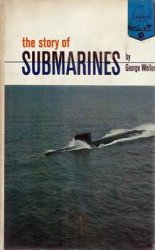Before the torch landings the position of the British and
Commonwealth forces in North Africa had been precarious to say the least. Through 1941 and the first half of 1942, war in the desert had continued to seesaw between thrust and counter-thrust. When Auchinleck’s Crusader offensive ran out of steam in early 1942, Rommel counter-attacked. The ensuing battle of Gazala saw the British put into flight on 14 June, with the Eighth Army scrambling back towards Egypt to avoid encirclement and capture, while the previously indomitable garrison ofTobruk surrendered on 21 June. The British and Commonwealth forces continued their headlong retreat until they reached El Alamein, a choke point on the way into Egypt.
Here the coast road and railway passed through a 40-mile (64km) gap bordered by the Mediterranean to the north and the Qattara Depression to the south. This wasteland of salt marshes and soft sands was impenetrable to armoured vehicles and prevented Rommel from making the sort of spectacular, sweeping flanking move that had brought him success at Gazala. Beyond the British line at El Alamein, the desert opened up and the way to Alexandria, Cairo and the Suez Canal was clear. Unfortunately for Rommel, by the time his soldiers began trying to force themselves through El Alamein on 1 July they were absolutely shattered, having endured five weeks of constant advance and battle. Trying to seize back the initiative, Auchinleck took personal command of the Eighth Army and counter-attacked the Afrika Korps. It was to little avail.
For the remainder of July the two exhausted adversaries faced one another until both sides called a halt to their operations. For Auchinleck it was desirable for the stalemate to be as prolonged as possible. New Sherman tanks were on their way from America and reinforcement by the 51st Division was expected shortly. on the flip side, Auchinleck knew that Rommel was also waiting for reserves before recommencing his drive into the Nile Delta. If Rommel’s reserves arrived first, the British commander had scant forces available and many of his vehicles were in repair shops. The only thing he had left to hand was deceit.
Auchinleck turned to his Director of Camouflage, Major Geoffrey Barkas, and asked for every dummy gun, truck and tank they could lay their hands on to be placed behind the front line, suggesting to Rommel’s scouts
164
And photo-reconnaissance that the troops at El Alamein were only the forward posts of a much stronger army.
By trade Barkas was a film director, producer and writer, having directed the 1928 film Q-Ships about a British merchant ship in World War I with hidden armaments used against German U-boats. As was the case with Colonel Turner’s decoy organization, professionals from the world of cinema dealt daily in the art of tricking the human eye through a lens and thus proved extremely adept at military deception.
In addition to cinema, the art of camouflage had long been the preserve of artists. Most attribute the modern concept of camouflage to the American artist Abbott H. Thayer, who made a study of defensive coloration in the animal kingdom in 1896.1 During World War I Picasso’s geometric Cubist style influenced French camoujleurs, and it was the British painter Norman Wilkinson who devised the concept of ‘dazzle ships’ in April 1917. Pointing out that there was no way of hiding a large ship on the horizon through a German periscope, Wilkinson demonstrated it was possible, by painting ships in Cubist-like angled blocks of greys and blues, to distort the view of the ship through the periscope and thus confuse or ‘dazzle’ the aimer about its direction and speed. Before long, thousands of vessels were painted in the striking manner conceptualized by the artist.
In 1940 the War Office established the Camouflage Development and Training Centre at Farnham Castle in Surrey. It was the preserve of a mixed bag of individuals including Hugh Cott, a distinguished . zoologist who applied the coloration found on animal skins to guns and tanks. From the art world there was the Surrealist artist and friend of Picasso, Roland Penrose, who wrote the Home Guard Manual oj Camouflage. Penrose’s party trick was successfully to hide his lover, the acclaimed American model, photographer and war correspondent Lee Miller, in a garden, naked, camouflaged from prying eyes with body paint and netting. He reasoned that if he could hide a naked woman in a garden full of people, anything could be hidden.
Perhaps the most famous of the British camoujleurs was the popular stage magician Jasper Maskelyne. Following the publication of his memoirs in 1949, Maskelyne has long been seen as the leading light in the deception world. However, the truth about the ‘war magician’ appears somewhat less fantastic under scrutiny. Maskelyne arrived in Cairo on 10 March 1941 as part of a detachment of 12 camouflage officers sent to work with Barkas. He spent much of his time performing magic shows for entertainment purposes and later went on to work for the escape and evasion department MI9, where he helped in devising concealed escape devices for POWs.
165
Maskelyne’s actual involvement in military deception appears to have been a bit of a sham. Curiously enough, people appeared much more confident with the dummy vehicles when they were told they had been devised by a well-known illusionist. It also appears that Dudley Clarke encouraged Maskelyne’s boasting to some extent, because it diverted attention away from A Force and himself. Somewhat ironically, then, Maskelyne’s main contribution to deception may have been to provide a cloak behind which others could work in secret.2
Maskelyne’s more limited role is also suggested by the artist Julian Trevelyan, a fellow graduate from Farnham. An interesting character in his own right, Trevelyan was a member of the British Surrealist movement and before the war had experimented with injections of hallucinogenic synthetic Mescalin crystals, an experience which led him to exclaim: ‘I have been given the key of the universe.’ His feet firmly back on the ground, Trevelyan was sent from the United Kingdom on a fact-finding mission to the Middle East to witness the deceptions being carried out there by Barkas’s department.
In March 1942 Trevelyan visited Tobruk and then went to Barkas’s Camouflage Training and Development Centre at Helwan near Cairo. He was generally impressed with what he saw, except perhaps with a dummy railhead complete with dummy rolling stock and station, which he claimed that the Germans complimented by dropping a wooden bomb on. Having witnessed the hand of Barkas at work, the artist remarked: ‘It is thanks to Barkas, principally, that the formidable technique of deception has been elaborated. You cannot hide anything in the desert; all you can do is to disguise it as something else. Thus tanks become trucks overnight, and of course trucks become tanks, and the enemy is left guessing at our real strength and intentions.’3
Returning to the situation at El Alamein, Barkas followed Auchinleck’s orders to congregate his dummies behind the main lines and was overjoyed that he, for the first time, received the magic words ‘operational priority’ to assist him.4 Operation Sentinel saw the land between El Alamein and Cairo become dotted with camps, complete with smoke rising from cookhouses and incinerators. Canteens were set up with dummy vehicles parked outside while their imaginary drivers were inside enjoying an equally notional ‘brew’. To thicken the defensive positions, the craftsmen at Barkas’s school at Helwan developed a wide range of decoys, including batteries of field guns that could be stowed inside a single truck. Within three weeks of starting the build up Barkas was simulating enough activity to indicate the presence of two fresh motorized divisions in close reserve to the main line.
166




 World History
World History









